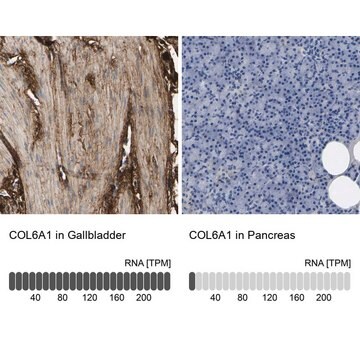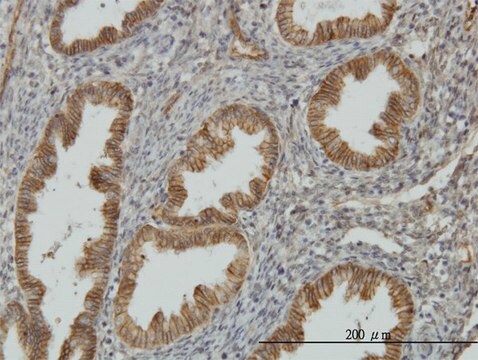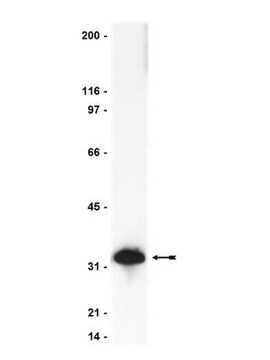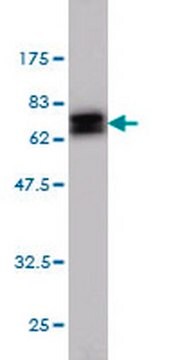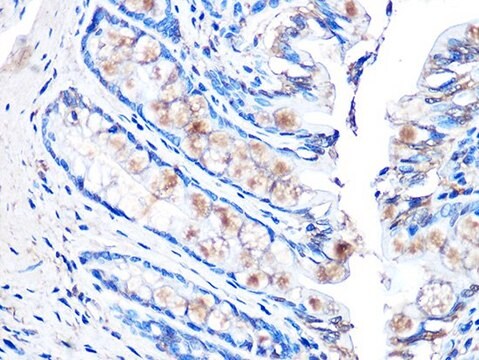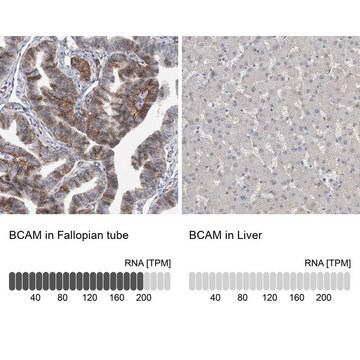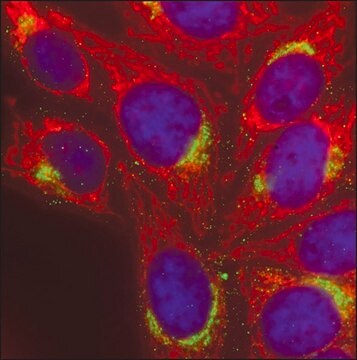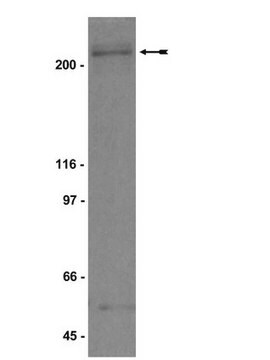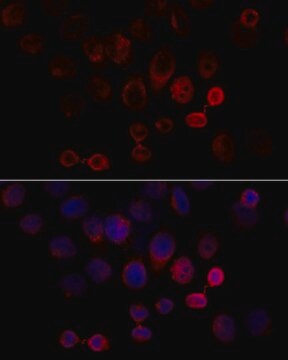詳細
We are committed to bringing you greener alternative products, which adhere to one or more of The 12 Principles of Green Chemistry.This antibody is Preservative-free, produced without the harm or sacrifice of animals and exceptionally stable to allow for ambient shipping and storage if needed and thus aligns with "Waste Prevention", "Designing Safer Chemicals" and "Design for Energy Efficiency".
Click here for more information.
ZooMAb® antibodies represent an entirely new generation of recombinant monoclonal antibodies.Each ZooMAb® antibody is manufactured using our proprietary recombinant expression system, purified to homogeneity, and precisely dispensed to produce robust and highly reproducible lot-to-lot consistency. Only top-performing clones are released for use by researchers. Each antibody is validated for high specificity and affinity across multiple applications, including its most commonly used application. ZooMAb® antibodies are reliably available and ready to ship when you need them.
特異性
Clone 5N4 is a ZooMAb® Rabbit recombinant monoclonal antibody that specifically detects NDRG1 phosphorylated on Threonine 346.
免疫原
KLH-conjugated linear peptide corresponding to 10 amino acids surrounding phosphothreonine 346 of human NDRG1.
アプリケーション
Quality Control Testing
Evaluated by Western Blotting in U87 cell lysate.
Western Blotting Analysis: A 1:1,000 dilution of this antibody detected Phospho-NDRG1 (Thr346) in U87 cell lysate.
Tested Applications
Western Blotting Analysis: A 1:1,000 dilution from a representative lot detected Phospho-NDRG1 (Thr346) in NIH3T3 cell lysate.
Affinity Binding Assay: A representative lot of this antibody bound Phospho-NDRG1 (Thr346) peptide with a KD of 6.9 x 10-6 in an affinity binding assay.
Peptide Inhibition Assay: Target band detection in lysate from U87 cells was prevented by pre-blocking of a representative lot with phosphorylated NDRG1 (Thr346) peptide.
Immunocytochemistry Analysis: A 1:100 dilution from a representative lot detected Phospho-NDRG1 (Thr346) in C2C12 cells.
Immunohistochemistry (Paraffin) Analysis: A 1:1,000 dilution from a representative lot detected Phospho-NDRG1 (Thr346) in human colon and human cervical cancer tissue sections.
Note: Actual optimal working dilutions must be determined by end user as specimens, and experimental conditions may vary with the end user
ターゲットの説明
Protein NDRG1 (UniProt: Q92597; also known as Differentiation-related gene 1 protein, DRG-1, N-myc downstream-regulated gene 1 protein, Nickel-specific induction protein Cap43, Reducing agents and tunicamycin-responsive protein, RTP) is encoded by the NDRG1 (also known as CAP43, DRG1, RTP) gene (Gene ID: 10397) in human. NDRG1 is a stress-responsive protein that is induced under a wide variety of stress and cell growth-regulatory conditions. It is ubiquitously expressed but the most prominent expression is observed in placental membranes, prostate, kidney, small intestine, and ovary tissues. It is mainly a cytoplasmic protein, but is differentially localized to other regions. NDRG1 is reported to be up-regulated by cell differentiation signals in various cancer cell lines and also suppresses tumor metastasis. It is reported to play different roles in metastatic versus non-metastatic cells. It suppresses cell growth and proliferation in the metastatic H1299-NDRG1 cells, but does not have any effect on the non-metastatic DLD-1-NDRG1 cells. It is induced about 20-fold during in vitro differentiation of the colon carcinoma cell lines HT-29-D4 and Caco-2 cells. NDRG1 is shown to be essential, but not sufficient for p53/TP53-mediated caspase activation and apoptosis. It is also shown to have a role in cell trafficking of Schwann cells and is necessary for the maintenance and development of the peripheral nerve myelin sheath. NDRG1 is phosphorylated by several protein kinases, including PKA, PKC, and CaMK II. It is also phosphorylated by SGK1 on many serine and threonine residues in the C-terminal region, which is temporally and spatially controlled during the cell cycle. This ZooMAb® recombinant monoclonal antibody, generated by our propriety technology, offers significantly enhanced specificity, affinity, reproducibility, and stability over conventional monoclonals.(Ref.: (Ref.: McCaig, C., et al. (2011). Biochem. Biophys. Res. Commun. 411(2); 227-234; Ellen, TP., et al. (2008). Carcinogenesis. 29(1); 2-8).
物理的形状
Purified recombinant rabbit monoclonal antibody IgG, lyophilized in PBS with 5% Trehalose, normal appearance a coarse or translucent resin. The PBS/trehalose components in the ZooMAb formulation can have the appearance of a semi-solid (bead like gel) after lyophilization. This is a normal phenomenon. Please follow the recommended reconstitution procedure in the data sheet to dissolve the semi-solid, bead-like, gel-appearing material. The resulting antibody solution is completely stable and functional as proven by full functional testing. Contains no biocide or preservatives, such as azide, or any animal by-products. Larger pack sizes provided as multiples of 25 μL.
再構成
300 μg/mL after reconstitution at 25 μL per vial. Please refer to guidance on suggested starting dilutions and/or titers per application and sample type.
保管および安定性
Recommend storage of lyophilized product at 2-8°C; Before reconstitution, micro-centrifuge vials briefly to spin down material to bottom of the vial; Reconstitute each vial by adding 25 μL of filtered lab grade water or PBS; Reconstituted antibodies can be stored at 2-8°C, or -20°C for long term storage. Avoid repeated freeze-thaws.
法的情報
ZooMAb is a registered trademark of Merck KGaA, Darmstadt, Germany
免責事項
Unless otherwise stated in our catalog or other company documentation accompanying the product(s), our products are intended for research use only and are not to be used for any other purpose, which includes but is not limited to, unauthorized commercial uses, in vitro diagnostic uses, ex vivo or in vivo therapeutic uses or any type of consumption or application to humans or animals.

